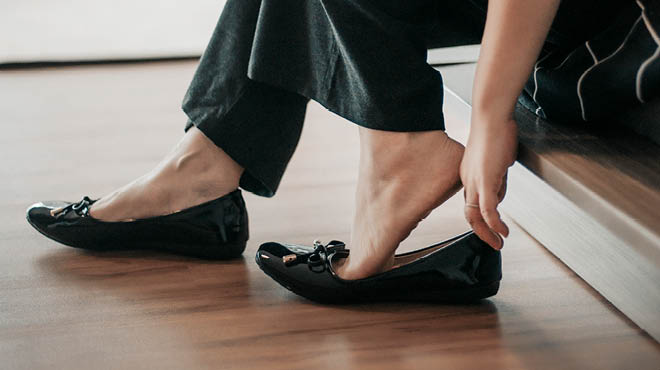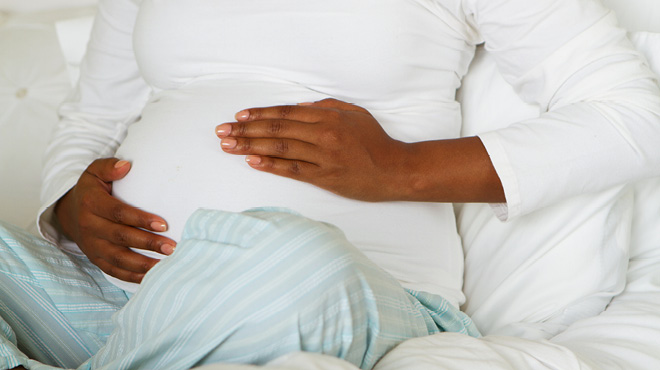Recent Posts
Managing plugged ducts, mastitis when breastfeeding

The American Academy of Pediatrics recommends infants be exclusively breastfed or given only breast milk only for the first six months of life. The group also recommends that continuing breastfeeding as solid foods are introduced, up to and beyond the child's first year or as long as the mother and child desire. Many people desire to exclusively breastfeed their child for six months and plan to continue to breastfeed for one year or more.
Breast pain is the most frequently stated reason for early weaning. The longer a person experiences breast pain, the more likely they will wean the baby before they intend to. Immediate intervention and treatment of breast pain is crucial to preserving the breastfeeding relationship, and helping the person and their child continue breastfeeding.
Plugged ducts and mastitis are common conditions that can affect up to 1 in 5 people who begin breastfeeding. Both conditions cause pain and discomfort in the breast, which can affect long-term breast milk feeding goals. A plugged duct obstructs milk flow in a portion of the breast, either at the nipple or further back in the ductal system. Mastitis is inflammation and infection of the breast. These conditions happen most often in the first six to eight weeks postpartum, but they can occur at any time during breastfeeding.
Risk factors for plugged ducts, mastitis
Stress, fatigue, anemia and a weakened immune system are risk factors for plugged ducts and mastitis.
Additional risk factors for plugged ducts include:
- Inadequate breast emptying
This could be caused by a poor latch or nipple pain, or a baby who is sleepy, tongue-tied or uncoordinated with suck and swallow. - Limited time during feedings
This could occur if feedings are rushed or if the person is breastfeeding multiple babies. - Missed feedings
Plugged ducts are possible when there is a longer interval between breast emptying when the baby starts sleeping for longer periods, an abrupt weaning or overuse of a pacifier. - Pressure on the breast
This could include pressure from fingers during feedings, tight clothing around or on the breast, underwire bras, or pressure from carrying purse or diaper bag, car seat or baby carrier.
Mastitis can be caused by any of these risk factors, in addition to having sore cracked or bleeding nipples, which can serve as an entry point for an infection and possibly lead to a prolonged hospital stay. People with a history of plugged ducts or mastitis also are at an increased risk for a future infection.
Symptoms of plugged ducts, mastitis
Plugged ducts and mastitis can be uncomfortable for people who are breastfeeding. Plugged duct symptoms progress gradually, and can include pain, a hard lump, a warm and painful localized spot or a wedge-shaped area of engorgement on the breast. Mastitis symptoms appear rapidly and include flu-like symptoms such as fever, chills, fatigue and body aches. The pain typically is more intense than a plugged duct, and the person also may notice red streaking on the breasts.
Prevention of plugged ducts, mastitis
You may have heard the saying "An ounce of prevention is worth a pound of cure." That is true for breast pain caused by plugged ducts or mastitis.
To get your breastfeeding relationship with your infant off to its best start — and avoid complications such as mastitis — keep these tips in mind:
- Breastfeed in different positions to allow for more thorough emptying of the breast.
- Create a frequent feeding schedule and empty each breast completely. With a newborn, this could be eight to 12 feedings in 24 hours.
- Establish a good latch at every feeding to empty the breast better and prevent damaging the nipple.
- Use high-quality pure lanolin or lanolin ointment for sore, cracked or bleeding nipples.
- Wear a well-fitting nursing bra, and avoid underwire bras or tight straps from clothing, bags, purses or infant carriers.
It also may be helpful to meet with a lactation consultant who can provide additional tips and advice on proper breastfeeding techniques.
People with frequent plugged ducts may see improvement by taking a supplement called lecithin, which can reduce the "stickiness" of the milk and prevent plugged ducts from occurring. In addition, new research has found that taking probiotics can prevent and decrease the incidence of mastitis and is safe during breastfeeding. Look for a probiotic that contains Lactobacillus fermentum and Lactobacillus salivarius.
Treatment for plugged ducts, mastitis
Most people can unclog a milk duct at home within two days. Continue to breastfeed or pump as much as your baby needs. Don’t feed or pump more than usual because this can put more stress on the ducts and cause even more inflammation.
Some of the best ways to clear a clogged milk duct are easily remembered by the acronym B.A.I.T:
- Breast rest: Don’t over massage or overfeed. Decrease production if you have an oversupply
- Advil: 800 milligrams (mg) every eight hours for 48 hours
- Ice: Apply for 10 minutes at a time while laying on your back. Repeat every 30 minutes
- Tylenol: 1,000 mg every 8 eight hours for 48 hours
You can also:
- Lightly stroke your breasts using the same motion as if you are petting a cat. Stroke toward the lymph nodes above your collarbone (clavicle) and in your armpits to help drain swelling into your lymphatic system
- Eat a well-balanced, healthy diet
- Rest
- Practice therapeutic breast massage taught by a certified lactation consultant
Treating a plugged duct promptly is essential to prevent further progression, reduce pain and eliminate frustration.
A healthcare professional may prescribe antibiotics if a person has mastitis, is acutely ill and the symptoms persist or worsen. Breastfeeding and expressed breast milk feeding are safe and recommended, even with antibiotic therapy.
Abbey Rose is a certified nurse midwife in OB-GYN in Tomah, Wisconsin.





